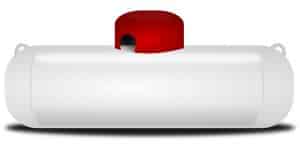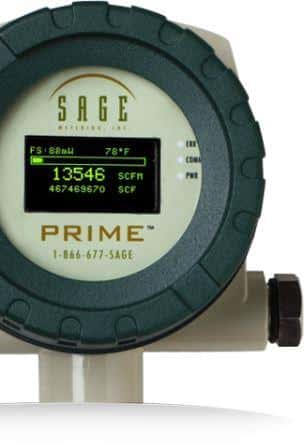Propane is a gas at standard temperature and pressure but is compressible to a transportable liquid. It is a three-carbon alkane with the molecular formula C₃H₈.
Propane versus Natural Gas
 In the event of a natural gas disruption, propane makes a reasonable backup for natural gas, and thermal mass flow meters improve combustion control and efficiency to the boiler. Propane is a byproduct of natural gas and oil production, with over 90% coming from natural gas. The fuel has higher than double heat energy content (BTU) than methane. While propane fuels barbeque grills and portable stoves, it is also considered a good backup fuel source for natural gas in the event of a supply disruption.
In the event of a natural gas disruption, propane makes a reasonable backup for natural gas, and thermal mass flow meters improve combustion control and efficiency to the boiler. Propane is a byproduct of natural gas and oil production, with over 90% coming from natural gas. The fuel has higher than double heat energy content (BTU) than methane. While propane fuels barbeque grills and portable stoves, it is also considered a good backup fuel source for natural gas in the event of a supply disruption.
Propane as Backup for Natural Gas
Liquid propane evaporates to gas by reducing the pressure. When propane in the gas state mixes with air, the heat energy is decreased and can emulate natural gas BTU (1,030 BTU per cubic foot). Therefore in facilities where a loss of steam or heat could be catastrophic, propane can be used as an emergency backup fuel for natural gas when making certain system modifications. Some facilities install 30,000-gallon storage tanks, which can store up to 25,000 gallons of propane, to counteract the possibility of a natural gas service disruption.
Propane has a higher cost per BTU than most fuel sources. Its ability to match the combustion properties of natural gas, however, makes it a desirable backup alternative.
Measure Propane Flow
Measuring the flow rate of propane to the boiler or heater is often necessary for improving combustion efficiency and meeting environmental requirements. Thermal mass flow meters have a low-pressure drop and wide turndown to meet this requirement.
Sage Prime and Paramount provide easy-to-install insertion thermal mass flow meters as well as in-line thermal flow meters with built-in flow conditioners that monitor the air and fuel flow rates to the burner. These direct mass flow meters do not require separate temperature or pressure transmitters, have no moving parts, are highly accurate and repeatable, and have negligible pressure drop. The Sage Thermal Mass Meters have extraordinary rangeability of at least 100 to 1, as well as fast response. In addition to the 4 – 20 mA control output of flow rate, the meters also provide pulsed outputs of consumption in conjunction with fully Modbus-compliant RS485 RTU communications. The meters also feature bright graphical displays of flow rate, a non-resettable totalizer (often a requirement for environmental reporting), a temperature reading, plus continuous diagnostics. For difficult-to-reach burner lines or for locations with extreme radiant heat, Sage also offers a remote-style flow meter, with up to 1000 feet of lead length compensated cable – all electronics and power are at the transmitter – thus, the probe or flow body simply has a terminal junction box.
Learn more about thermal mass flow meters.

